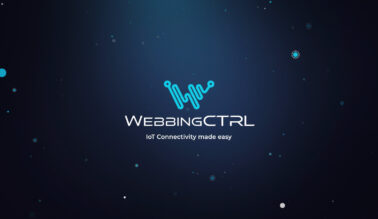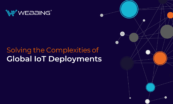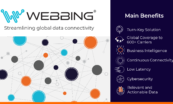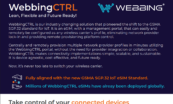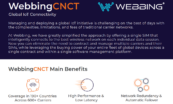What is UICC?
UICC is the Universal Integrated Circuit Card. It is the metal strip on the SIM card that contains a microprocessor, data storage, software, and SIM. It identifies you to your wireless carrier, so they know your plan and services. It can store your contacts and enables a secure and reliable connection, global roaming, and remotely adds new applications and services.
The UICC comes in four main form factors: Mini (2FF), Micro (3FF), Nano (4FF) and M2M (MFF2 which is embedded). The functionality of all the form factors is the same. Carrier provisioning is done at the manufacturing level, hosts only one profile and is not reprogrammable. That’s why you need a new SIM when switching cellular providers.
What is eUICC?
eUICC is the Embedded Universal Integrated Circuit Card. The Global System for Mobile Communications Association (GSMA) has made technological advancements to the UICC standard, now called the eUICC standard. It allows for the eUICC to be remotely programmable and reprogrammable, host multiple profiles (carrier subscriptions/profiles), and makes the selection, contracting, and onboarding of operators easier with Over-The-Air (OTA) provisioning. An eUICC may be built using any form factor from the traditional removable card to embedded formats soldered into devices.
What is eSIM?
A SIM card with eUICC technology is called an eSIM. eSIM technology offers a robust, scalable solution to the limitations of the traditional SIM. It is designed to be interoperable, allowing the customer to switch seamlessly from one wireless carrier to another.
An eSIM can come in all modern form factors used for a traditional SIM despite the new name for the circuit card.
What is the difference between Embedded SIM, eSIM, and eUICC?
An embedded SIM is a chip that is soldered onto the device. An eSIM is a SIM in any form factor with eUICC technology. The eUICC is the software component that allows for remote SIM provisioning of multiple network profiles.
What is the difference between Consumer eSIM and M2M eSIM?
The GSMA has defined two standards for eSIM (eUICC SIM): Consumer and Machine to Machine (M2M). Both share the ability to manage multiple profiles and remote provisioning.
The Consumer Standard, as the name suggests, targets Consumer devices, like mobile phones, tablets and laptops, as well as Consumer IoT devices including wearables, and other electronics with an end-user interactive environment. It allows the user to manage several profiles easily.
The M2M Standard targets Industrial M2M and IoT devices such as cellular modules, power plants, water meters, trackers, and other components used in an industrial, non-end-user interactive environment. Implementation is cumbersome, expensive, and time intensive. It also requires collaboration and integration with your wireless carriers to onboard additional carriers.
What is ICCID?
ICCID is the Integrated Circuit Card ID. It’s the identifier of the subscription / profile by the wireless carrier. This is also the identifier of the SIM card when it’s a UICC card. ICCID is a unique 18-22 digit code that includes a SIM card’s country, home network, and identification number. It’s the identification of the Profile.
The same ICCID can have 1 or more IMSIs relating to it. For eUICC there can be several ICCIDs on the same SIM.
What is EID?
The eUICC Identifier (EID) is a unique global serial number for eSIMs and its length is 32 digits. It is not related to service subscriptions and cannot be used to identify them. Each device with an eSIM has an EID and each WebbingCTRL SIM has an EID.
What is an EID used for?
EID is the identifier used for eSIM remote provisioning. For example, when WebbingCNCT is needed for eSIM enabled iPhone 11, the iPhone’s EID can be simply entered in Webbing’s Management Portal and it will automatically provision the device with a Webbing profile.
What is IMSI?
IMSI is the International Mobile Subscriber Identity. It is a unique identifier used by the carrier to identify the SIM on the mobile network. All signaling and messaging in cellular networks use the IMSI as the primary identifier of a subscriber.
What is Multi-IMSI?
Multi-IMSI is a SIM that holds two or more IMSI profiles, which can be switched between them to improve device connectivity and up-time. Webbing has 7 different profiles/identities built into the SIM that enables 600+ carriers to be accessed across the world with a single SIM solution. It enables backup and redundancy and hence ensures continuous connectivity.
Why is IMSI switching important?
An IMSI switching mechanism enables the service provider to provide continuous connectivity, high availability, and extensive coverage. It enables smart algorithms to choose the best host network, best quality, and best price.
What is 5G NSA?
5G NSA (Non-Standalone Access) relies on the 4G network facilities to provide more speed and higher data bandwidth.
What is 5G SA?
5G SA (Standalone Access) is the true 5G network, where the 5G network has its dedicated 5G facilities to provide enormous speed improvements and minimal network latency. It is independent of the 4G network
Does Webbing support 5G NSA today?
Yes.
What is an eSIM Profile?
An eSIM Profile is a virtual subscription / profile that stores a user’s subscription and network settings, the information that is traditionally stored on carrier SIMs. It allows the user to connect to the corresponding mobile network.
